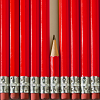There are 24 NRICH Mathematical resources connected to Tree diagrams, you may find related items under Probability.
Broad Topics > Probability > Tree diagramsAlison and Charlie are playing a game. Charlie wants to go first so Alison lets him. Was that such a good idea?



When two closely matched teams play each other, what is the most likely result?



Imagine flipping a coin a number of times. Can you work out the probability you will get a head on at least one of the flips?



If everyone in your class picked a number from 1 to 225, do you think any two people would pick the same number?



Can you work out which spinners were used to generate the frequency charts?



This interactivity invites you to make conjectures and explore probabilities of outcomes related to two independent events.



Discs are flipped in the air. You win if all the faces show the same colour. What is the probability of winning?



Which of these games would you play to give yourself the best possible chance of winning a prize?



Chris and Jo put two red and four blue ribbons in a box. They each pick a ribbon from the box without looking. Jo wins if the two ribbons are the same colour. Is the game fair?



Predict future weather using the probability that tomorrow is wet given today is wet and the probability that tomorrow is wet given that today is dry.



How can we find out answers to questions like this if people often lie?




What percentage of students who graduate have never been to France?




These strange dice are rolled. What is the probability that the sum obtained is an odd number?



Simple models which help us to investigate how epidemics grow and die out.



This article explains how tree diagrams are constructed and helps you to understand how they can be used to calculate probabilities.
What is the chance this pea plant will look like its parents?



By tossing a coin one of three princes is chosen to be the next King of Randomia. Does each prince have an equal chance of taking the throne?



Playing squash involves lots of mathematics. This article explores the mathematics of a squash match and how a knowledge of probability could influence the choices you make.
Your partner chooses two beads and places them side by side behind a screen. What is the minimum number of guesses you would need to be sure of guessing the two beads and their positions?



If the score is 8-8 do I have more chance of winning if the winner is the first to reach 9 points or the first to reach 10 points?


